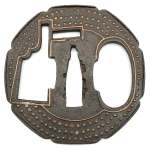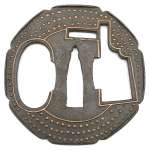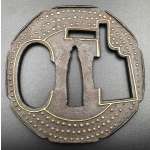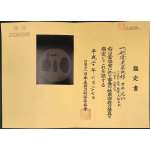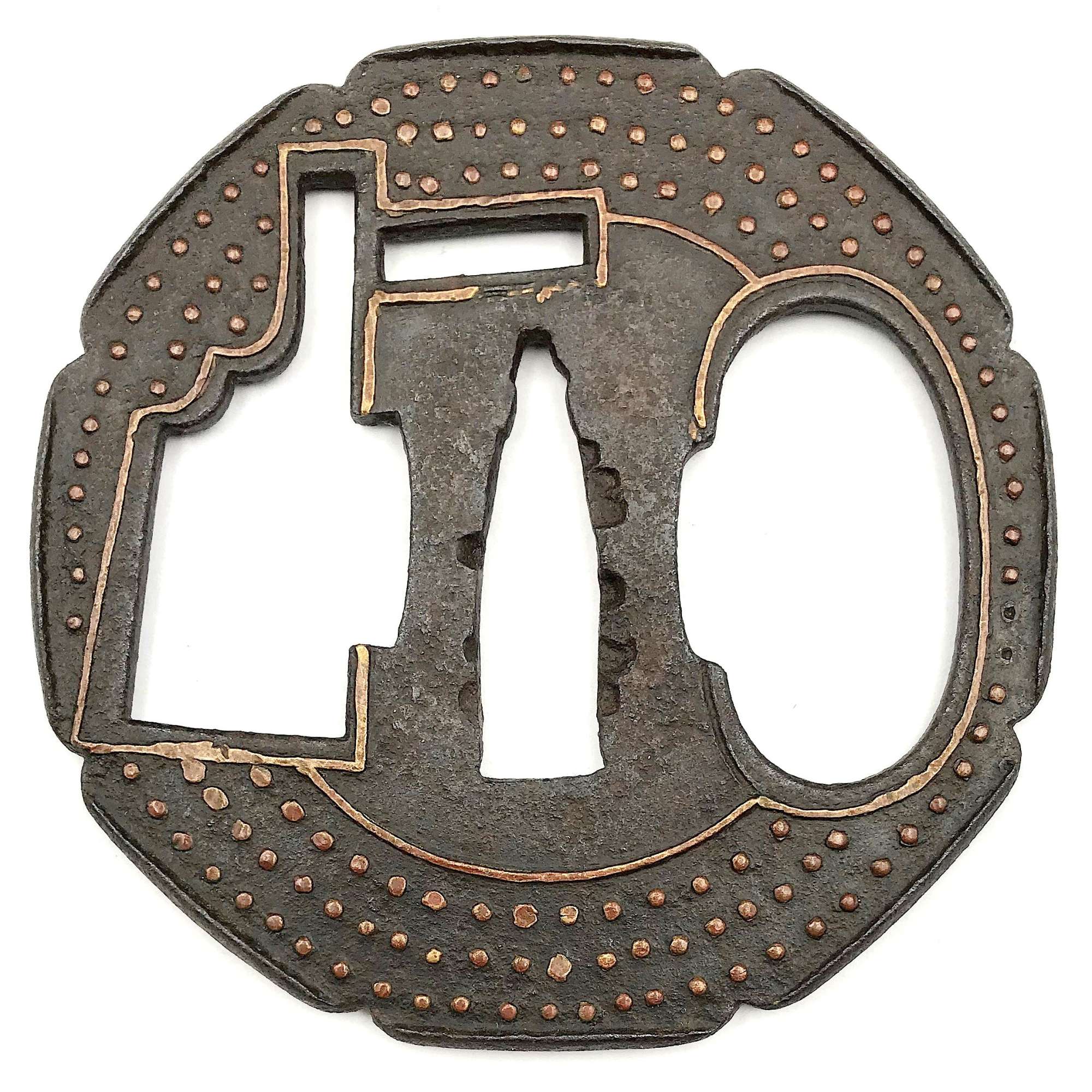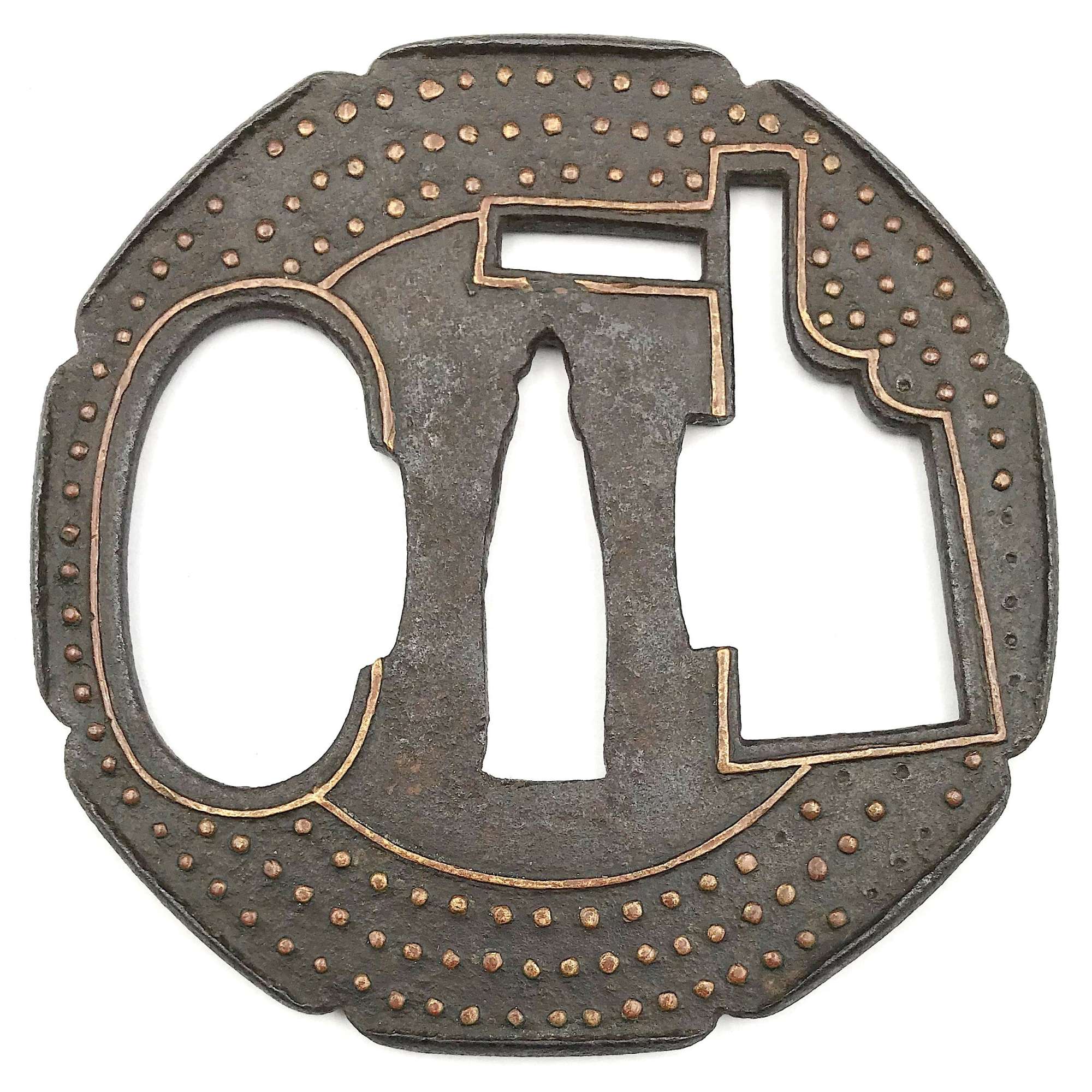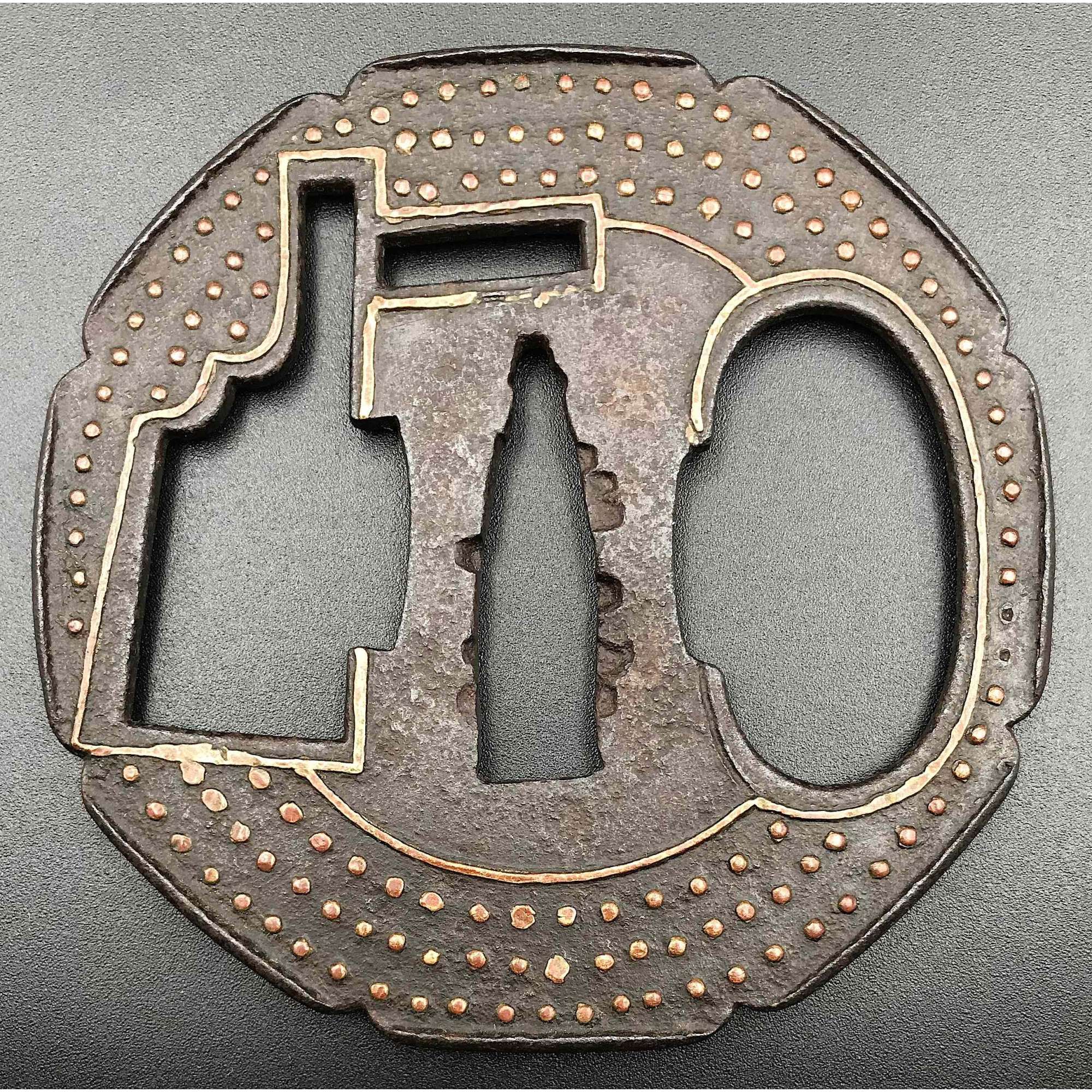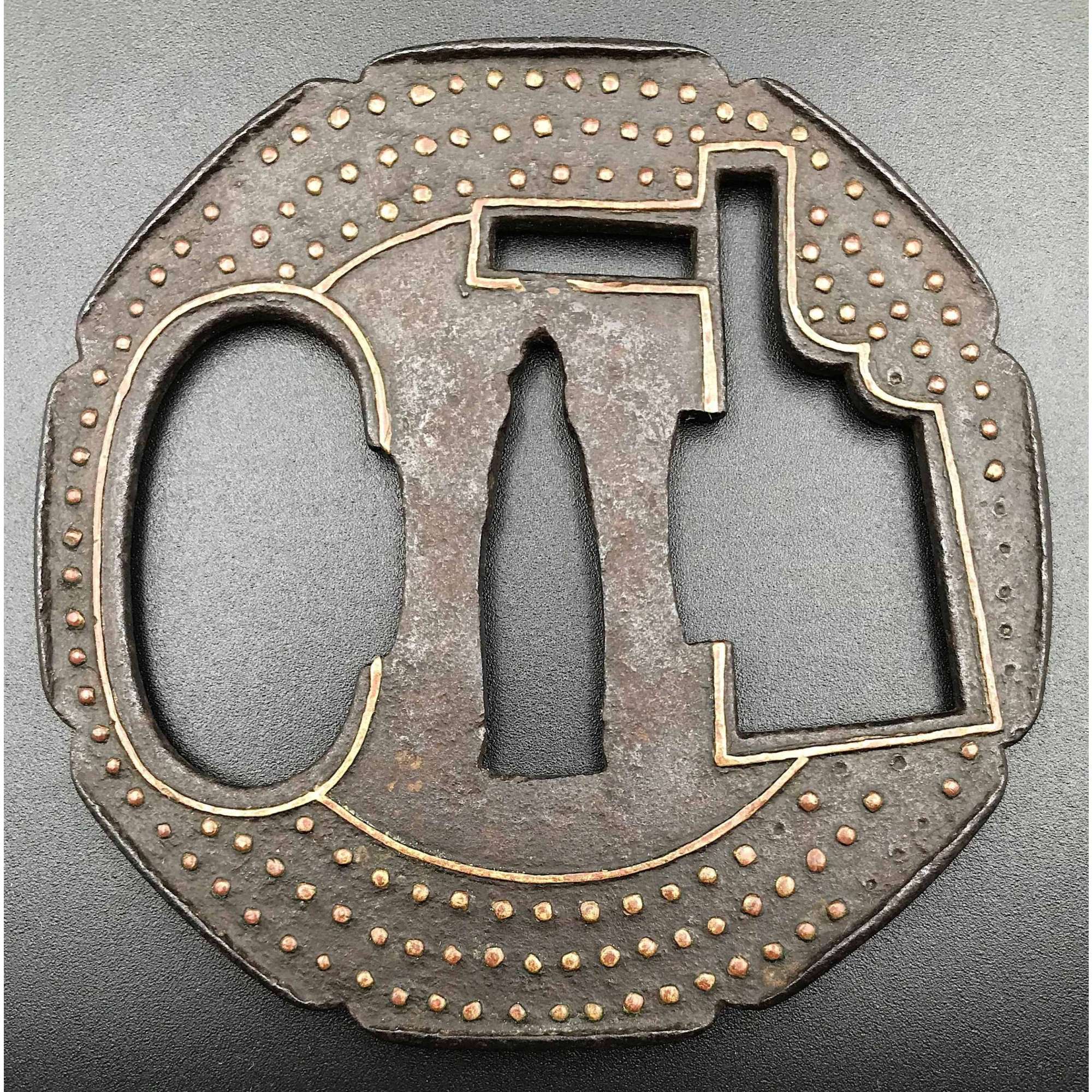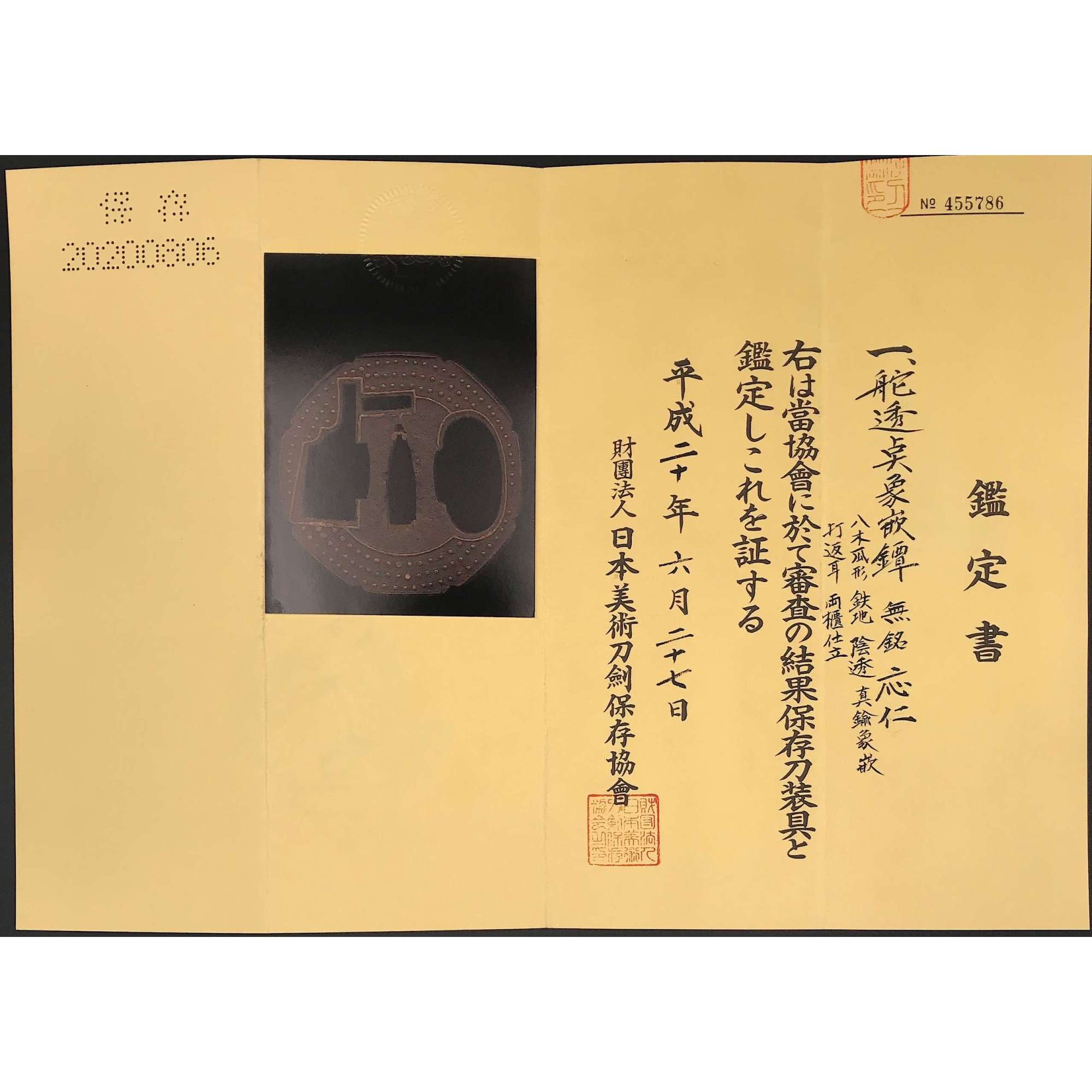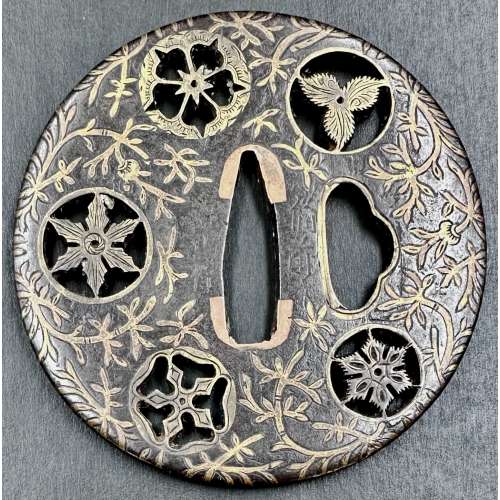Iron tsuba of octafoil form with design of rudder (kaji) and lake in openwork (sukashi) outlined with brass wire. Thin plate also decorated with three concentric circular rows of brass dots (nail heads) in ten-zōgan. Center of the plate outlined with the inlaid circular brass wire. Cut-outs for kozuka and kogai probably added later. Slightly raised rim between the indentations (suki-nokoshi-mimi). The inlaid metal of red-ish hue, so it may be copper, not brass. Sekigane, visible on the NBTHK paper photo, are missing, possibly removed by a previous owner.
Muromachi period.
Ōnin school.
Unsigned.
Dimensions: 81.2 mm x 81.8 mm x 2.7 mm. Weight: 79.0 g. Large nakago-ana: 34 mm high and 10 mm wide.
NBTHK certificate №455786: Hozon.
Note regarding design: it was quite hard to interpret the big oval opening. The first suggestion was ‘sea cucubmer’, and it was based on a design published by Kazutaro Torigoye [Kodogu and tsuba. International collections not published in my books (Toso Soran), 1978] on page 202: Katchūshi tsuba: Sea cucumber and butterfly. Look and judge yourself:

Torigoye: sea cucumber and butterfly.
The second suggestion – ‘lake’ – came from [Iron tsuba. The works of the exhibition “Kurogane no hana”, The Japanese Sword Museum, 2014], page 14 №5:
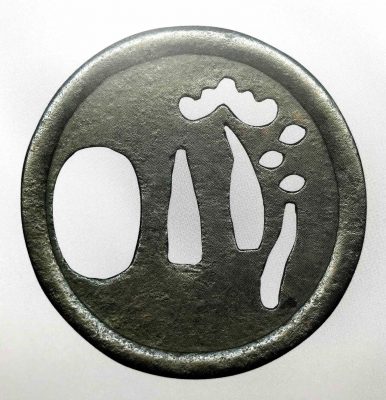
Ko-Katchūshi tsuba: Lake and pine.
Opening on my tsuba looks more like the ‘lake’. Also, rudder and lake make more sense than rudder and sea cucumber. At least to me…


